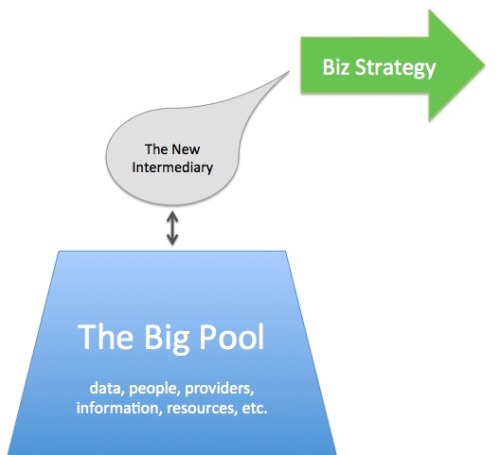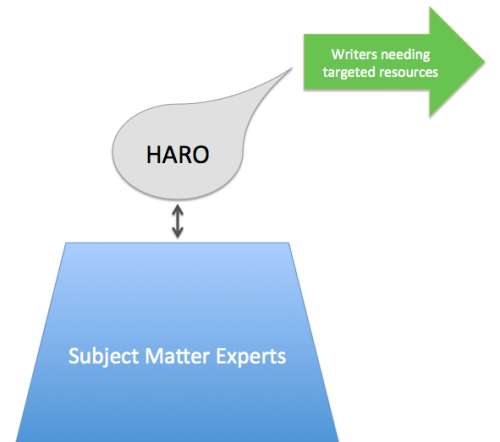Intermediation Biz Opportunity: Matchmaking
February 6, 2013 5 Comments
{Note: I am now blogging at my brand-spanking-new site, SteveWoodruff.com. Just click here to subscribe to the new feed. Bonus – you can also sign up at the same time for my astonishingly brief yet brilliant e-newsletter, Clarity Blend (see sample), and when you sign up, you’ll get a free download of my helpful new e-book, Make Yourself Clear: Six Steps to De-fogging Your Direction and Your Message.}
Let’s talk about arranged marriages. OK, not quite – but have you ever thought about how matchmaking can apply to business? Read on…
In an introductory post, I opened up the idea of potential business opportunities that exist by thinking about The New Intermediation. The Ugly Graphic™ below depicts how this works:
In a second post, we discussed the opportunity of Curation (filtering and delivering information) in the world of new intermediation. Today, let’s look at another manifestation of the new intermediation: Matchmaking.
A matchmaker is a key individual, platform, or company that has deep connections with a pool of people/providers, and then brings the right (targeted) resource to a client with a business or personal need.
Think of what recruiters (headhunters) do. It’s that kind of intermediation, but scaled in new ways and applied to other business problems beyond staffing.
My Impactiviti business (identifying optimal outsource vendors for my pharma clients looking for training/marketing suppliers) is one example of business matchmaking (see graphic here).
In Kansas City, my friend George Weyrauch has launched Rock Creative to provide a very similar service for creative types.
Another example familiar to many is HARO (Help A Reporter Out), the news/resource matching service launched by Peter Shankman. Reporters have always had a need to find subject matter experts. Many people who could be valuable resources are invisible to media types. So, HARO was born – a daily e-mail service where journalists looking for sources post what they need, and targeted individuals respond. Simple, brilliant matchmaking. And Peter is smarter than me, because HARO is fed-by-both-sides e-model that was able to be increasingly automated. I’m not jealous. I’m really not. OK, I’m jealous.
(on a side note, HARO was bought by Vocus a year or two back. Creating a winning intermediation service can have quite a significant ROI!)
Our world of business has always run smoother because of intermediaries. There are bridges that need to be built – today, and tomorrow. Gaps are everywhere. Intermediaries see them, and create beneficial connections. <<–(click to tweet this)
Many roles, of course, have been disintermediated through technology advancements. But other, digitally-fueled models have arisen. Sometimes, they are ePlatforms, like Match.com and eHarmony (where “matchmaking” is not a metaphor, but is the whole point!) Do you know of other matchmaking business approaches that you’ve seen recently enabled in our networked world? Do share in the comments!







Recent Comments